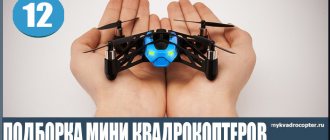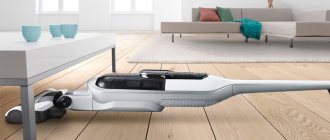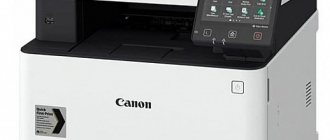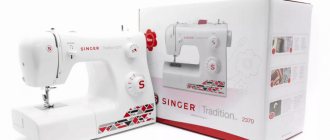In order to choose a metal detector, you need to determine what you will be looking for, since there are no universal devices, some metal detectors work well with non-ferrous metals, while others work well with ferrous metals, and the location of the search also greatly depends.
Over time, all search engines, having passed the beginner level, choose a specific specialization and deal only with it, but until you know what to look for, here are the main directions:
- jewelry;
- coins;
- military relics from different eras;
- gold, silver and other precious metals;
- meteorites;
- black metal.
The features of these areas and the requirements for devices are as follows:
- if you want to look for gold, you will need a specialized device that operates at high frequencies;
- if you are looking for jewelry on the beach, you will need a waterproof detector with ground balance, since the sand is often highly mineralized, which is why the device can constantly beep and there will be false alarms;
- meteorites and military relics contain a lot of ferrous metal, and any devices can work with it.
Which metal detector is better to buy?
Let's consider the main criteria for choosing a metal detector.
Detection depth depends on the correct ratio of the coil frequency and the soil interference compensation technologies used in the device.
The domestic market offers models operating at the following frequencies:
- Up to 2.5 kHz – devices with low sensitivity, which are suitable for searching for large metal objects at a depth of up to 50 cm.
- 7 kHz – inexpensive devices with a maximum detection depth of up to 1 m.
- From 10 to 20 kHz - very advanced devices that allow you to find metals with low conductivity in highly mineralized soils at a depth of about 2 m.
In expensive professional-level metal detectors, the operating frequency range can be adjusted.
Soil balance - this function allows you to ignore interference caused by soil structure or contaminants. In budget models, manual adjustment is more common; automatic ground balancing can be seen in mid-range and premium models.
Detection method. Modern devices use VLF technology, which makes it possible to distinguish ferrous metal from non-ferrous metal and non-ferrous metals from each other.
More advanced models are equipped with VFLEX technology, which significantly increases the detection depth and recognizes metals better.
You can read more about choosing metal detectors in our article: how to choose a metal detector.
Recommendations: 12 best hidden wiring detectors
13 Best Laser Levels
15 best fish finders
Necessary functions when choosing
Coil type : there are mono and DoubleD coils; in budget options, mono coils are used.
Coil size: detection depth is directly related to the diameter of the coil, the larger the coil, the greater its depth; in standard configurations, coils with a diameter of 8 to 12 inches are used.
Discrimination is the main function of a metal detector, which is responsible for identifying an object. The quality of the discriminator provides better separation of different metals and more informatively shows the VDI of the desired object.
The best entry-level metal detectors (up to 20 thousand rubles)
Models in the lower price category use the simplest detection methods. Characteristic features of budget detectors are a search depth not exceeding 50 cm and average discredit rates, which make it possible to distinguish ferrous metals from non-ferrous ones.
Minelab X-Terra 305 is the most functional budget model
4.9
★★★★★
editorial assessment
92%
buyers recommend this product
See review▶
A reliable device, perfectly adapted to searching for small objects, equipped with high-frequency coils. There is the ability to adjust the ground, which means that searching on difficult soils will be effective.
Detuning electrical noise allows you to work in close proximity to other metals and high-voltage power lines. And the 12-tone discrimination scale makes it much easier to exclude groups of unwanted objects.
Advantages:
- High frequency coils;
- An excellent set of functions and capabilities for this price segment;
- Precise discrimination;
- Long time of continuous operation.
Flaws:
- Weak attachment of the coil to the rod.
Minelab X-Terra will be a good choice for both a novice search engine and an experienced user. Despite its low cost, it is quite functional.
Fisher F-22 - metal detector with increased sensitivity
4.8
★★★★★
editorial assessment
89%
buyers recommend this product
See review▶
A good entry-level metal detector, equipped with an electronic detection system and automatic ground balancing.
The presence of three pre-installed programs makes it easy to search for jewelry, gold, antiques made of ferrous and non-ferrous metals.
The device also provides a fourth program - for combining user settings for volume, sensitivity and discrimination.
The display shows the depth of the object and the exception scale. The device is equipped with a speaker and a built-in headphone jack.
Advantages:
- Light weight;
- Sufficient set of functions;
- Electronic detection system;
- Ability to save custom settings.
Flaws:
- Difficulties in metal identification.
The Fisher F-22 is an excellent tool for periodically searching for coins in low mineralization soils.
Deteknix Quest Q20 – good for searching in land and water
4.8
★★★★★
editorial assessment
88%
buyers recommend this product
See review▶
An entry-level three-program metal detector is designed to search for objects made of ferrous and non-ferrous metals. It can work not only on the ground, but also in water with the coil submerged up to 3 meters.
Sophisticated software and manual adjustment of soil balance provide a high level of discrimination. And after the recent update of the model, the operating frequency of the coils has also increased.
The ergonomic design of the device is equally convenient for left-handers and right-handers. The rod here is three-sectional, and its length is adjusted with special clamps.
Nice bonuses from the manufacturer: pin-point function, built-in flashlight and wired headphones included. The metal detector is powered by a built-in battery with charging via a mini-USB interface.
Advantages:
- Housing with a high degree of moisture protection;
- Good discrimination;
- Informative display, plus sound identification;
- Effective in highly mineralized soils and sea water;
- Ability to set custom settings.
Flaws:
- There is a risk of cable breakage due to its poor location.
Quest Q20 is a universal metal detector that can be used at shallow depths, even underwater. It just requires careful handling.
Teknetics Alpha 2000 – detector with adjustable search depth
4.7
★★★★★
editorial assessment
88%
buyers recommend this product
See review▶
The entry-level model is suitable for searching for small objects made of ferrous and non-ferrous metals. The effectiveness of the device is ensured by 3 discrimination modes (All-Metal, Notch, Target ID) and 10 levels of indicating the search depth.
All information is displayed on an LCD display with two headphone jacks. The metal detector is powered by a 9-volt Kronov battery.
Advantages:
- Excellent ergonomics;
- Several discrimination modes;
- Sound three-tone indication;
- Setting the search depth;
- American assembly;
- Simple and intuitive controls.
Flaws:
- No ground balancing;
- Impressive dimensions.
In essence, the Alpha 2000 is the same Fisher metal detector, only more understandable and easier to learn, which is especially important for beginning treasure hunters.
Garrett ACE 250 – a device for beginners
4.6
★★★★★
editorial assessment
85%
buyers recommend this product
See review▶
A good ground model of a metal detector, which enjoys well-deserved popularity among novice searchers.
The main features of the device are automatic ground balancing, six operating modes and microprocessor detection technology.
An informative display, built-in speaker and headphone output will allow even a beginner to easily cope with the search.
Advantages:
- Compact size and light weight;
- Digital detection technology;
- There is an adjustment of the coil sensitivity;
- Automatic ground balancing.
Flaws:
- Low moisture protection;
- Small detection depth.
The Garrett ACE 250 is suitable only for beginner searchers who use the device as entertainment. However, it will help you understand all the features of such equipment, after which you can move on to more serious detectors.
Types of coils
One of the important parts of a metal detector is the coil, on which the search range and depth depend. There are a lot of types of coils, so let’s highlight the main ones:
- concentric, which is used in VFL and VFLEX circuits and consists of two windings located one inside the other;
- mono, the simplest of all with one winding for PI and RF circuits;
- Double-D, a coil that has two windings like two letters D, elliptical in shape with a common back, the principle of operation is similar to the concentric one, but the working band of the coil is wider;
- Super-D coil, which works on the ZVT principle and is installed in the amount of three pieces, where the central one works as a transmitter, and the outer ones work as receivers, and is used on all ground vehicles, except RF, covering small areas, which makes it easy to work with a thorough search on large areas;
- elliptical, which allows you to stretch the field, while capturing a large search area, although the accuracy of the object’s location is not very high;
- rectangular for deep-depth devices with RF operating circuit and is not suitable for other devices;
- butterfly, which is a variation of the DD variant, but changed in shape.
The best mid-level metal detectors (up to 35 thousand rubles)
Mid-class models are high-tech devices that are characterized by high search accuracy, impressive detection depth, good discrimination, as well as a solid set of functions and various settings.
GARETT ACE 350 EURO – ideal price/quality ratio
4.9
★★★★★
editorial assessment
95%
buyers recommend this product
See review▶
Garett Euro is the European analogue of the American model ACE 250. The main differences between the two metal detectors concern the discrimination of metals, as well as the diameter of the coil (it is larger here) and the depth scale - it was converted to centimeters.
The device is universal and has 5 preset search programs, a pin-point mode, automatic ground balancing, and a three-tone sound indication. The detector is powered by two AA batteries.
Advantages:
- Simplicity and reliability of design;
- The ability to search at greater depths than its American counterpart;
- Russified menu;
- Carrying backpack and electronics case included.
Flaws:
- Expanded discrimination based on ferrous metals has led to a reduced segmentation of non-ferrous metals.
Despite the weak division in non-ferrous metals, the Euro-version of ACE will find its fans - mainly among those who are just looking for large iron objects.
Detech EDS Gold Catcher – deep search for jewelry
4.8
★★★★★
editorial assessment
90%
buyers recommend this product
See review▶
This detector is “tailored” to detect gold and jewelry, and it has an extensive list of preset discrimination modes for these purposes. Gold Catcher can operate at high frequencies, which greatly simplifies the search for small objects and increases the depth of their detection.
The manufacturer has provided here for switching between normal and deep search modes, sensitivity adjustment, automatic manual balancing and pin point. The device comes with two 6″ DD and 10″ DD coils, as well as six AA batteries with a charger.
Advantages:
- Excellent functionality;
- Dual-mode search;
- Working with higher frequencies;
- Rich equipment;
- Possibility of connecting wireless headphones.
Flaws:
- There are no pre-installed search programs.
Detech EDS is designed for experienced users and is rightfully considered one of the best detectors in the mid-price segment. However, in terms of its capabilities and functionality, it is quite similar to a professional model.
White's Treasure Pro – autonomous and reliable detector
4.7
★★★★★
editorial assessment
88%
buyers recommend this product
See review▶
This metal detector is positioned by the manufacturer as a professional one. However, the main functionality of the device is limited by the presence of only 5 preinstalled search programs.
But there are plenty of additional goodies here: there is graphic and numerical discrimination, 8-tone sound, automatic ground balancing and sensitivity adjustment. The main thing is that the device can operate for more than 20 hours on just two AA batteries.
Advantages:
- Waterproof coil and control unit;
- Accurate determination of the depth of an object;
- Long battery life;
- High quality build.
Flaws:
- The rod is a little loose.
White's Treasure Pro is the senior model in the manufacturer's line. It has very interesting functionality and excellent autonomy. And most importantly, the device is not afraid of moisture, which expands the possibilities of its use.
Minelab X-Terra 705 – with VFLEX technology
4.7
★★★★★
editorial assessment
87%
buyers recommend this product
See review▶
The main advantage of this device is the ability to operate at three frequencies and the advanced VFLEX technology, which significantly increases the detection depth and quality of metal recognition.
Among the most useful functions of the device are: 6 preset search programs, several discrimination modes, automatic and manual ground balance, frequency shift for tuning out interference.
There is also a CoinsPlus mode, which stabilizes the detector readings on highly mineralized soils. The metal detector is powered by 4 AA batteries.
Advantages:
- Rich functionality;
- Two modes of pin-point operation (target position and dimensions);
- VFLEX technology;
- Compatible with all types of Minelab coils;
- Possibility of searching in multi-tone mode without turning on the discriminator.
Flaws:
- Low accuracy of the pin point on the original reel.
Overall, the X-Terra 705 turned out to be very functional and smart in its own way. It is most often used for beach searches for small objects.
Fisher F44-11DD - the most popular model
4.5
★★★★★
editorial assessment
82%
buyers recommend this product
See review▶
The waterproof, compact and inexpensive metal detector offers 5 operating modes with user settings saved, adjustable sound identification, 9 discrimination programs, automatic ground balance and target designation.
All parameters are displayed on the LCD display. The device comes with an 11” DD coil, which can be powered by 2 AA batteries for 15 hours.
Advantages:
- Compactness;
- Light weight - only 1 kg;
- Not a bad set of functions.
- FeTone function to change the sound of ferrous metal.
Flaws:
- Ill-conceived cable fastening from the reel to the block;
- Small detection depth (maximum 80 cm, and for coins only 35).
The Fisher F44-11DD offers a decent detector for experienced treasure hunters. The main thing is that its price is affordable for you.
The best professional metal detectors
Such metal detectors are characterized by high sensitivity, high-quality multi-level discrimination and maximum detection depth.
The advanced technologies and solutions introduced here make it possible to find objects smaller than a match head under a very thick layer of soil.
XP DEUS – a technologically advanced and savvy detector
4.9
★★★★★
editorial assessment
72%
buyers recommend this product
See review▶
This device contains all the most advanced technologies available to professional metal detectors.
It can operate at 7 frequencies, in addition, the manufacturer has provided 9 search programs, manual and automatic ground balance, interference rejection, multi-tone identification, multi-level discrimination, VDI/TargetID and pin point modes.
All these capabilities are hidden in an ultra-light device weighing less than a kilogram. True, weight reduction was achieved only by wirelessly connecting the modules to the main control unit.
Advantages:
- Rich functionality;
- 7 available frequencies;
- Ability to record user settings;
- Built-in batteries;
- Port for software update.
Flaws:
- The kit comes with headphones, but they are not very comfortable.
The XP Deus has both admirers and detractors – the variation with an 11″ DD coil is especially unfortunate. But in general, this option is great for thoughtful research of a previously explored area rich in finds (single-yard, old settlements, etc.).
AKA Signum MFT 7272M – for searches at great depths
4.8
★★★★★
editorial assessment
91%
buyers recommend this product
See review▶
A multi-frequency professional metal detector from a domestic manufacturer is the result of a refinement of the legendary model 72/72.
MFT technology and tuning to the required frequency in the range from 1 to 30 kHz provide high-quality search at any depth, especially if you switch to the “Turbo” mode. For example, the device is capable of detecting 5 Soviet kopecks at a depth of up to 2.5 m.
There are also plenty of other improvements here: SFT reduces interference from ground mineralization by 10 times, and the S-algorithm significantly improves discrediting. Identifying finds has also become easier thanks to the visual display of objects.
Advantages:
- Large detection depth;
- Advanced functionality;
- Visual and sound identification;
- Customizable discrimination masks;
- Automatic ground balance;
- Two sensitivity adjustment modes: automatic and manual.
Flaws:
- It is noisy and quickly drains battery power.
AKA Signum is best suited for searching for antiquities and military items at great depths.











